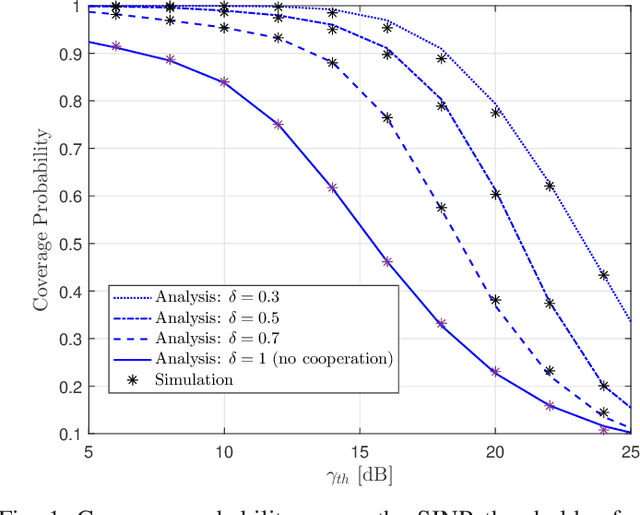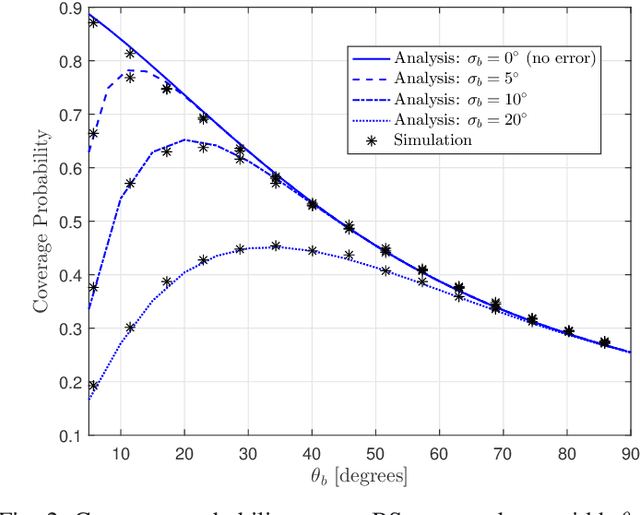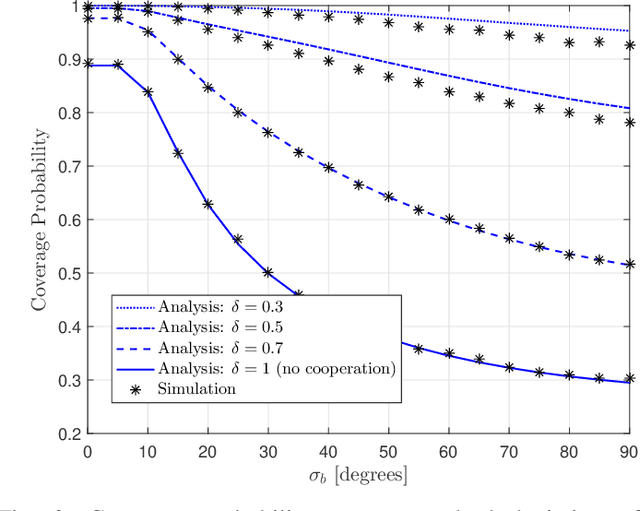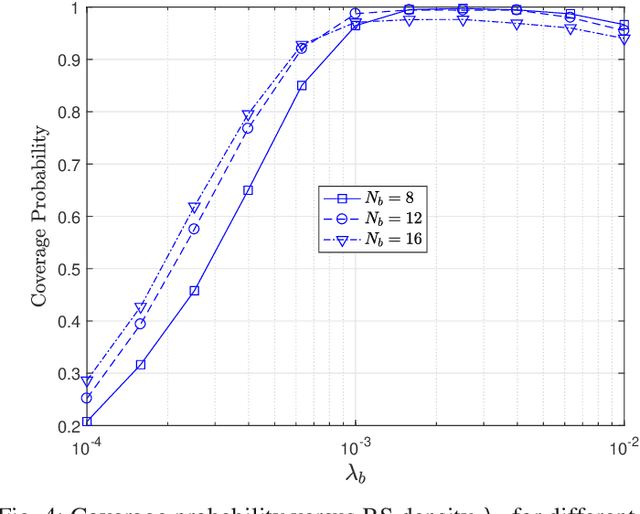Wessam Ajib
Terahertz User-Centric Clustering in the Presence of Beam Misalignment
Feb 19, 2024



Abstract:Beam misalignment is one of the main challenges for the design of reliable wireless systems in terahertz (THz) bands. This paper investigates how to apply user-centric base station (BS) clustering as a valuable add-on in THz networks. In particular, to reduce the impact of beam misalignment, a user-centric BS clustering design that provides multi-connectivity via BS cooperation is investigated. The coverage probability is derived by leveraging an accurate approximation of the aggregate interference distribution that captures the effect of beam misalignment and THz fading. The numerical results reveal the impact of beam misalignment with respect to crucial link parameters, such as the transmitter's beam width and the serving cluster size, demonstrating that user-centric BS clustering is a promising enabler of THz networks.
Copula-Based Modeling of RIS-Assisted Communications: Outage Probability Analysis
Jan 22, 2022
Abstract:Statistical characterization of the signal-to-noise ratio (SNR) of reconfigurable intelligent surface (RIS)-assistedcommunications in the presence of phase noise is an important open issue. In this letter, we exploit the concept of copula modeling to capture the non-standard dependence features that appear due to the presence of discrete phase noise. In particular,we consider the outage probability of RIS systems in Rayleighfading channels and provide joint distributions to characterize the dependencies due to the use of finite resolution phase shifters at the RIS. Numerical assessments confirm the validity of closed-form expressions of the outage probability and motivate the use of bivariate copula for further RIS studies.
 Add to Chrome
Add to Chrome Add to Firefox
Add to Firefox Add to Edge
Add to Edge